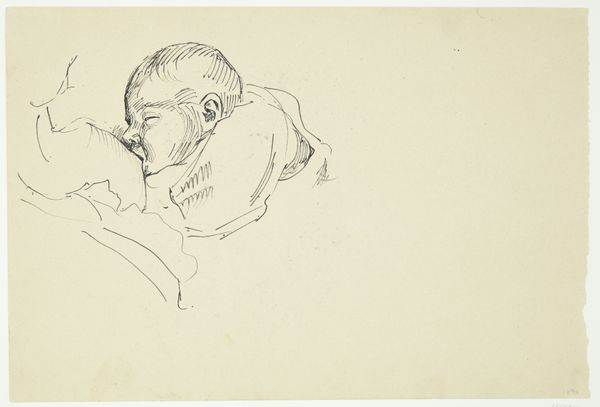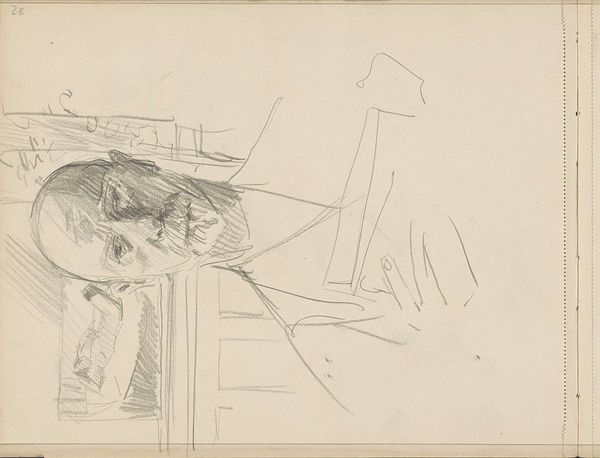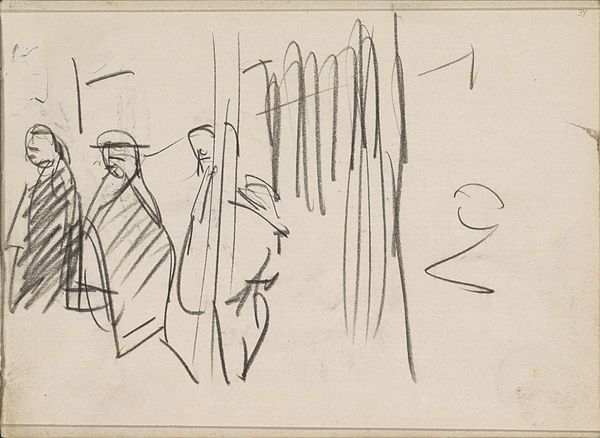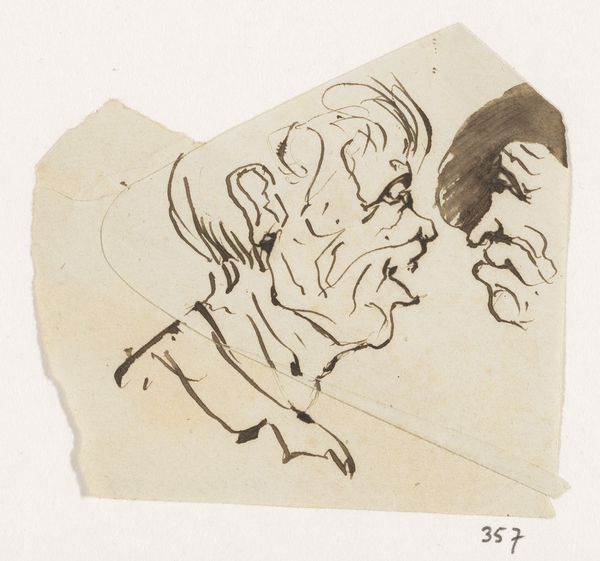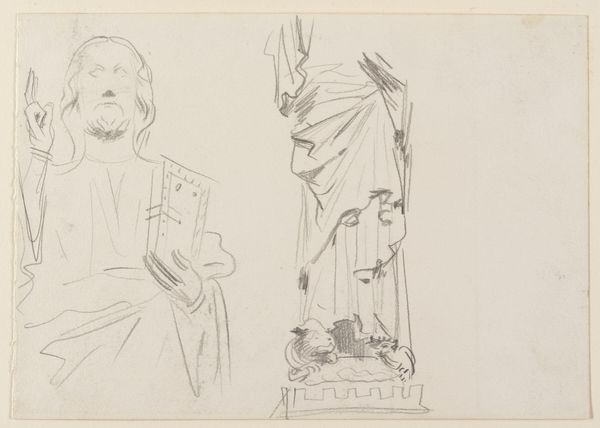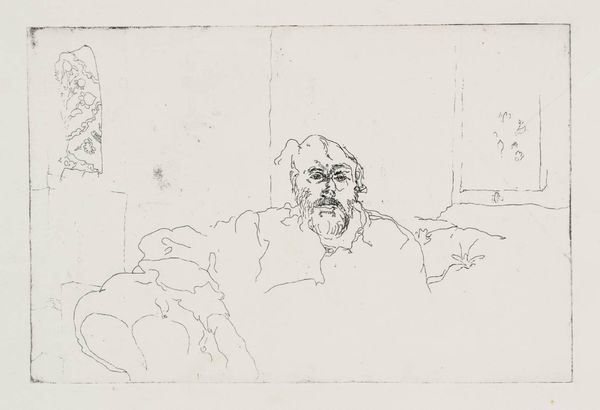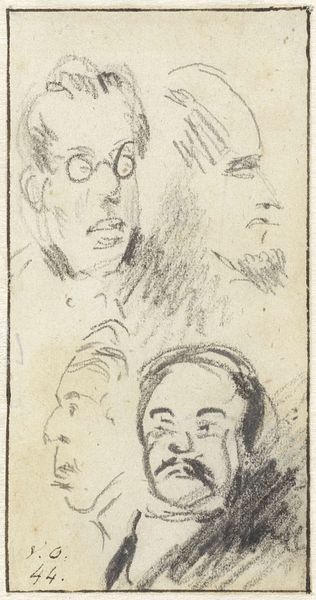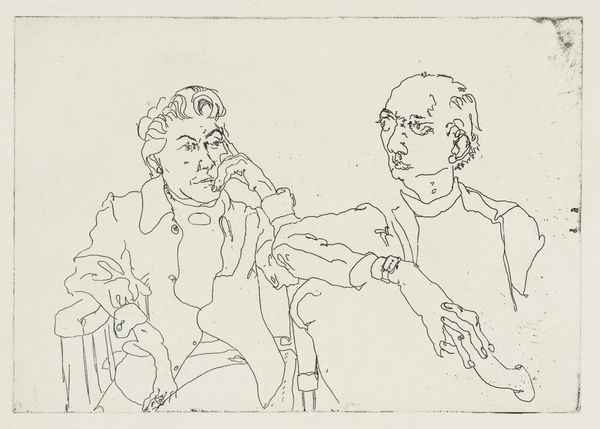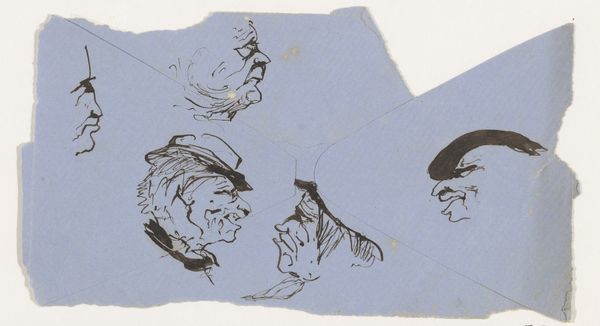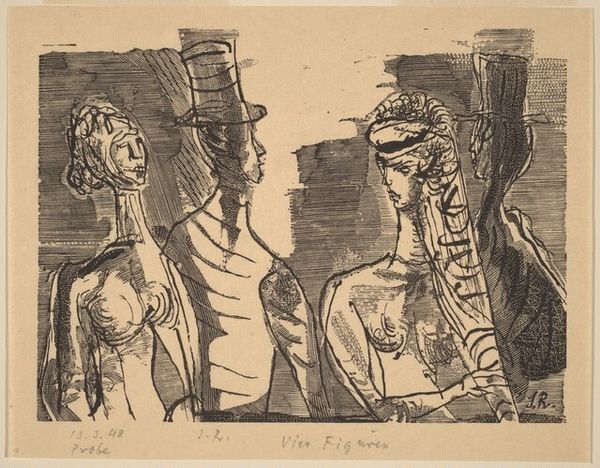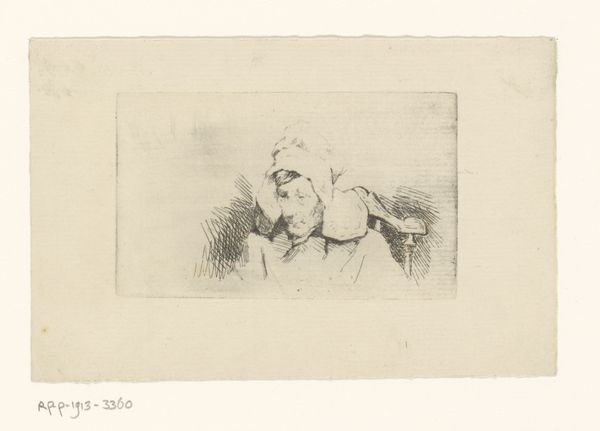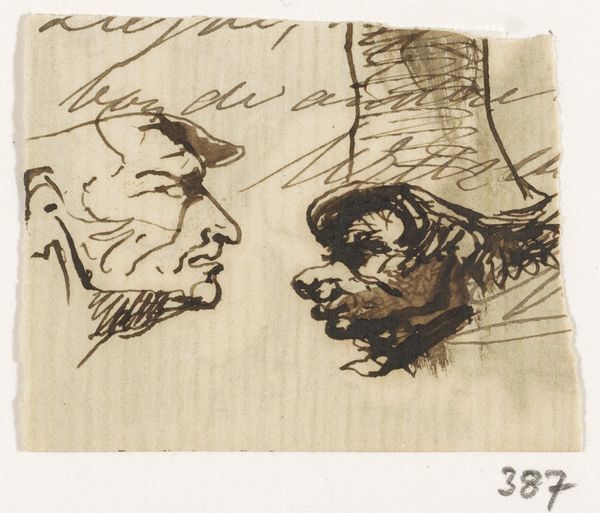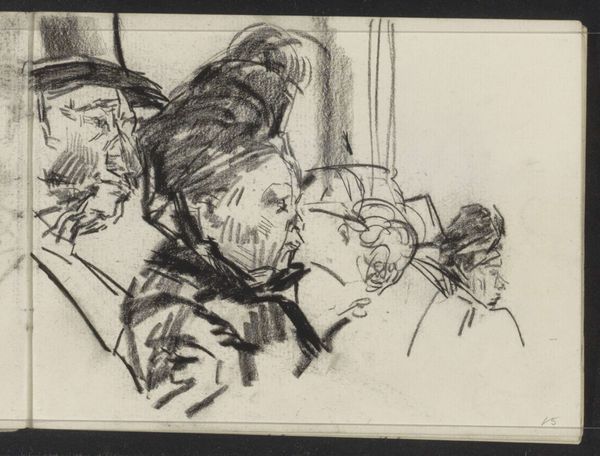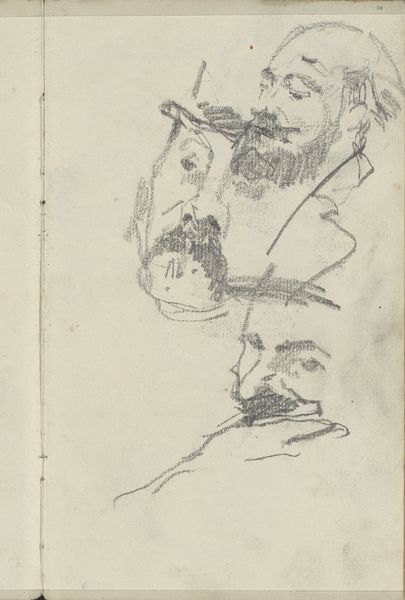
Fantasie: twee keer een man met een sik in profiel naar rechts 1919
0:00
0:00
drawing, ink
#
portrait
#
drawing
#
comic strip sketch
#
self-portrait
#
pen sketch
#
cartoon sketch
#
form
#
personal sketchbook
#
ink
#
sketchwork
#
ink drawing experimentation
#
geometric
#
pen-ink sketch
#
expressionism
#
line
#
sketchbook drawing
#
storyboard and sketchbook work
#
sketchbook art
Dimensions: height 215 mm, width 265 mm
Copyright: Rijks Museum: Open Domain
Editor: This is "Fantasie: twee keer een man met een sik in profiel naar rechts," or "Fantasy: Two times a man with a goatee in profile to the right," a 1919 ink drawing by Samuel Jessurun de Mesquita, currently at the Rijksmuseum. It's a rather stark image with these mirrored profile sketches. I am struck by its simplicity...almost like a study. What do you see in this piece? Curator: The immediate resonance for me is the duality, echoed in the title itself. We see two instances, reflections almost, but rendered with distinct tonal qualities. It beckons a deeper question: is this a man observed, or a man understood through the shifting lens of artistic representation? Consider how beards are symbolically potent signifiers, wisdom, virility, perhaps even defiance of modernity during this period. Editor: That’s a very interesting observation. So the differing darkness might indicate different aspects of the subject or artistic techniques, like a study of shading, or perhaps of the man’s inner life? Curator: Precisely. Think about the visual language of the time. Expressionism flourished in the wake of societal upheavals; thus, it seems almost defiant of strict portraiture, reaching towards emotional conveyance rather than photographic accuracy. What happens if we remove "accuracy" and lean into memory? Editor: So it's like the artist isn't just capturing how the man looks, but also conveying a feeling, or an idea connected to this type of man at that moment. It challenges what it meant to portray someone back then. Curator: Indeed, you start to wonder what the artist sought to achieve by presenting these twin visages. Were they explorations of identity, of memory, or perhaps the very act of observing oneself in different mental states? Editor: I hadn't thought of it that way, as almost a reflection on the artistic process itself. I’ll definitely look at other portraits with a different perspective now, wondering about what kind of feeling they are supposed to project, instead of searching just for an accurate rendering of the individual! Curator: And in that simple question lies the magic.
Comments
No comments
Be the first to comment and join the conversation on the ultimate creative platform.
